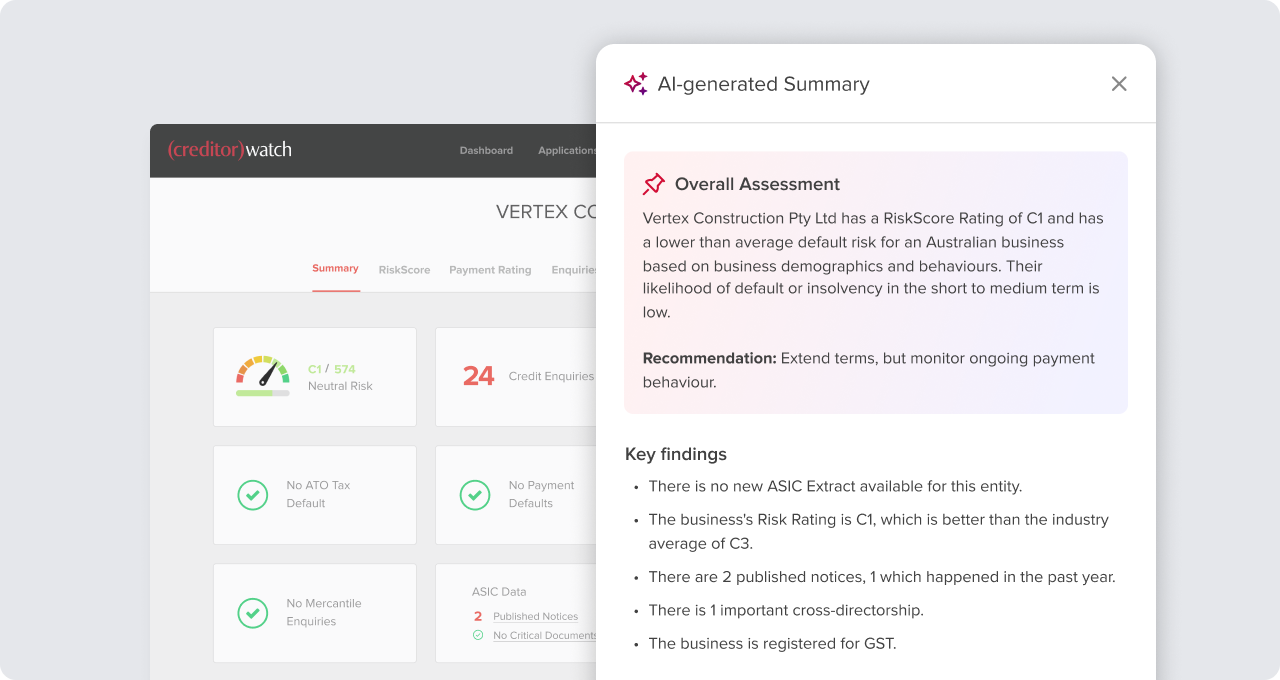
One of the best tools at your disposal to reduce business credit risk is accurate, up-to-date data. Unfortunately, dirty data is a common problem that limits the ability of a company to take action to mitigate credit risk. Luckily, there are steps you can follow to be proactive about your data management and data hygiene.
Proactive data management means company data is consistent, secure, and trustworthy. Having clean and accurate data records is fundamental for a company to properly monitor and control their cash flow. This affects their ability to forward plan, follow up on unpaid invoices, and improve operational efficiency. Unfortunately, dirty data – duplicate, missing and inaccurate customer and business information – derails company planning, especially in a high-growth phase. It is likely to limit a company’s capacity to make the most informed decisions, and can increase the likelihood of engaging with businesses already at credit risk.
Improving your data management through better data hygiene practices, as well as engaging with accurate data improvement tools, can offer a lifeline to a company hoping to reduce this risk.
Data management and its impact on credit risk mitigation
Without efficient data management infrastructure, a company will struggle to make precise, data-driven decisions, or garner accurate insights that could drive future growth. Bad data can additionally limit the ability of a company to identify high credit risk customers or businesses. By contrast, high-quality data management can have a significant impact on credit risk mitigation, including:
Better decision making – In an oft-seen scenario – in which a Sales team member quickly uploads client data into a company database – there is a high likelihood of human error factoring into the accuracy of that data. This may result in duplicate, inaccurate, or missing information. Unfortunately, without precise data you may not be able to perform the appropriate credit checks on potential customers, and partner businesses, that detail credit risk.
Before you engage with a new business, performing a business credit check can offer insights into its credit history, including incidents of poor payment behaviour or default. This information can inform your decision to work with the business in question, to mitigate the risk to your company. Without clean and accurate data, this due diligence process is made considerably more difficult. High-quality data management means a company is in a better position to make the most informed decisions.
Debt collection is made more efficient – Say an invoice goes unpaid – inaccurate customer or partner business data makes the process of resolving this issue more challenging. Dirty data unnecessarily increases the workload of employees, in departments such as Accounts, in chasing up the correct information in order to retrieve the outstanding funds.
With clean data, a company is given greater financial control. Timely actions can be taken to mitigate credit risk, such as following up on unpaid invoices or lodging payment defaults, and should improve payment collection to maximise cash flow. This process cannot occur efficiently unless the information provided is up-to-date.
As this information is often updated manually, dirty data may further increase stress on employees taking up responsibility in filling these data gaps. Proper data management can not only make debt collection more efficient but reduce employee time wasted cleaning up dirty databases.
How to improve your data management
Accurate and clean data can make a major impact on the success of high-growth companies and their ability to mitigate credit risk. Data is a valuable asset, and it is imperative that a company makes the improvement of data management a priority.
The first step to take is cleansing your database. Perform an audit of the existing database and begin the process of fixing instances of human error, and making the reading of data clear and concise. This includes:
- Removing duplicate data.
- Removing unnecessary data, like excessive blank spaces between text.
- Clearing formatting so you can start fresh.
- Fixing data types, such as when a date is entered as text.
- Fixing spelling and grammar errors.
- Creating consistency, such as date formatting or converting currency types into AUD from USD.
The process of improving your data management is likely too significant to add to the workloads of existing employees, especially when manual changes are required. This is where data management tools can streamline this process and help to improve data quality.
Data management tools, like CreditorWatch’s Portfolio Health Check, offers companies a comprehensive review of their customers. The Portfolio Health Check tool allows you to utilise CreditorWatch’s extensive database, as well as vital financial information from ASIC, ABR, AFSA, Australian courts, and mercantile agents, to validate, clean and fill in any gaps in your data. The data matching, validation, reconstruction, and standardisation process offers insights into the clients and business partners you’re engaging with, and, most importantly, whether they may be at credit risk.
At CreditorWatch, we know that receiving correct and accurate data in a timely manner is pivotal for Australian companies to reduce credit risk. Time wasted managing customers that have defaulted, or are late in paying invoices, is time diverted from business operations. Contact us for a free trial and streamline your data management today.

Get started with CreditorWatch today
Take your credit management to the next level with a 14-day free trial.

